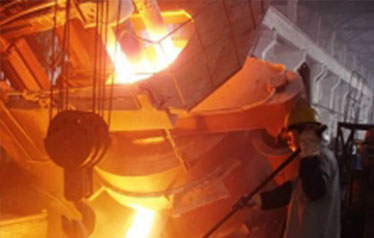
1. Wet graphite electrodes should be dried before use.
2. Remove the foam protective cap on the spare graphite electrode hole, check whether the internal thread of the electrode hole is complete.
3. Use oil water-free compressed air to clean the surface of the spare graphite electrode the internal thread of the hole; avoid cleaning with steel wire metal brush.
4. Carefully screw the connector into the electrode hole at one end of the spare graphite electrode (it is recommended to directly install the connector into the electrode removed the furnace), do hit the thread.
5. Screw the electrode sling (graphite sling is recommended) into the electrode hole at the other end of the spare electrode.

6. When lifting the electrode, pad a soft object under one end of the spare electrode mounting connector to prevent the ground damaging the connector; use a hook to extend into the hoisting ring of the spreader then hoist it. Lift the electrode smoothly to prevent the electrode loosening end B. Take off collide with other fixtures.
7. Hang the spare electrode above the electrode to be connected, align it with the electrode hole, then slowly drop it; rotate the spare electrode to make the spiral hook the electrode turn down together; when the two electrode ends are 10-20mm apart, use compressed air again Clean the two end faces of the electrode the exposed part of the connector; when the electrode is completely lowered at the end, it should be too strong, otherwise the electrode hole the thread of the connector will be damaged due to violent collision.
8. Tighten the spare electrode with a torque wrench until the end faces of the two electrodes are in close contact (the correct connection gap between the electrode the connector is less than 0.05mm).
Graphite is very common in nature, but it may still take several years even decades for scientists to find a way to convert graphite into large sheets of high-quality graphene "thin film", so that they can be used to make various products for humans. Kind of useful substance. According to scientists, in addition to graphene being extremely strong, graphene is currently known as the best conductive material, which makes it also has great potential for applications in the field of microelectronics. Researchers even see graphene as an alternative to silicon that can be used to produce future supercomputers.